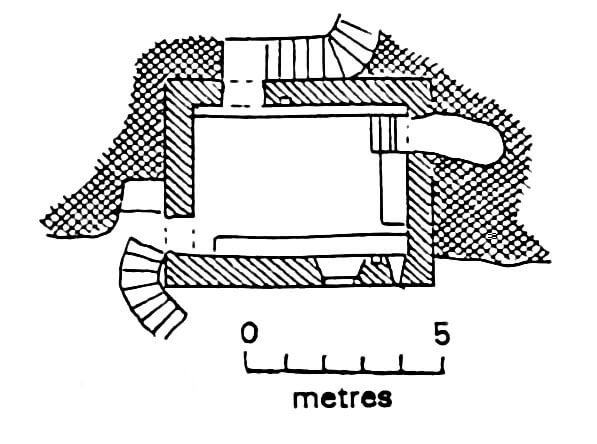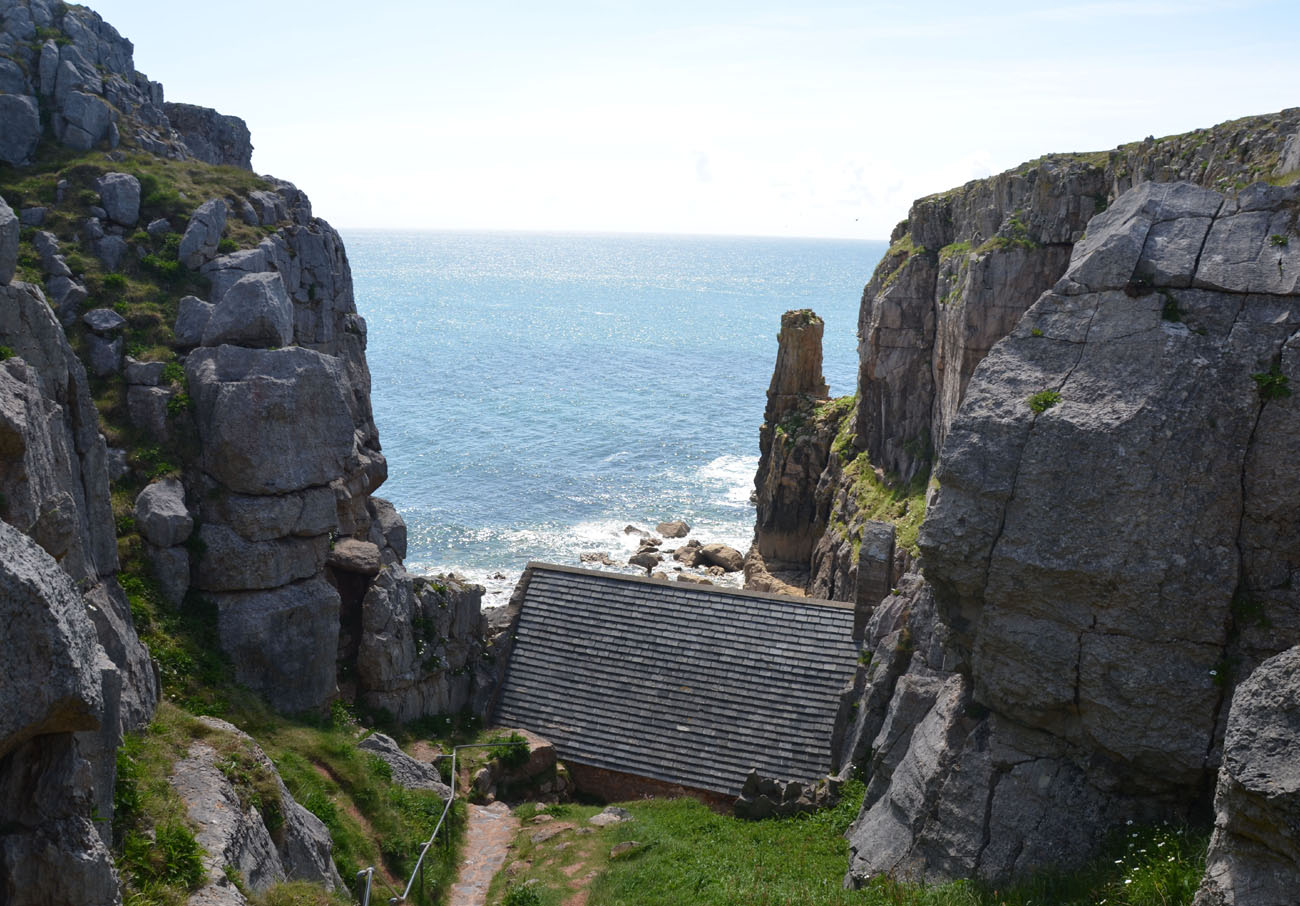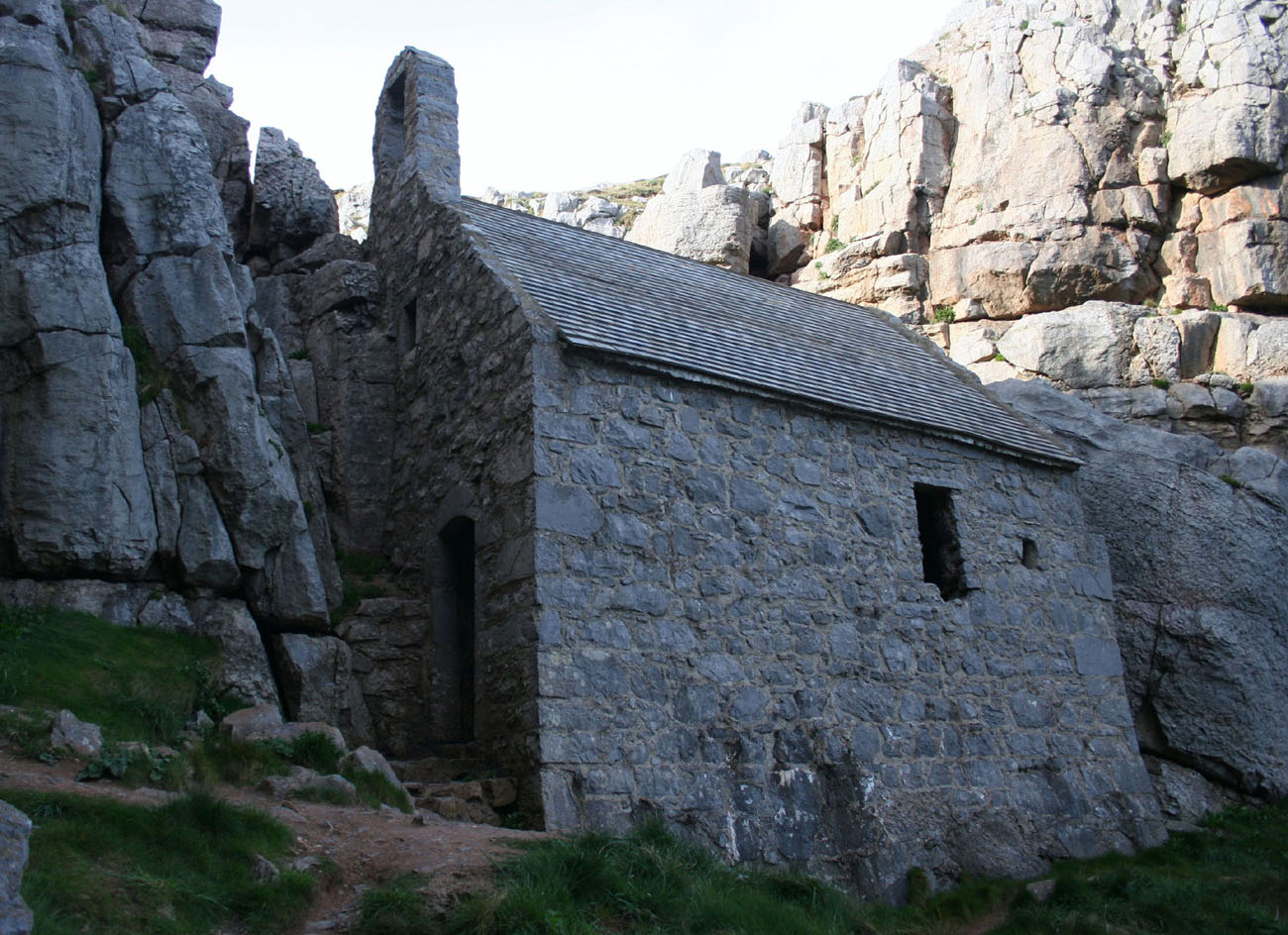History
The chapel was built in the 13th or 14th century, probably on the site of an older hermitage from the 6th century, created by Saint Gowan. Legend has it that the pirates tried to catch him, but in the place of the later chapel a gap opened miraculously, in which Govan could hide. When the pirates sailed away, the rock opened in a miraculous way for the second time. Apart from tradition, Saint Govan founded a hermitage in this place, where he lived until his death in 586. With time, the place was recognized by the local people, as having miraculous power and gaining fame, became the goal of the pilgrims for whom the chapel was erected.
Architecture
The chapel was built in a narrow, rocky gorge by the seaside. Access to it led from the north, through a long series of about 52 stairs carved in the rock. It obtained the shape of a simple, aisleless structure made of limestone, with dimensions of 5.5 by 3.6 meters. In its eastern end there is a stone altar and stairs leading to a small cell carved in the rock. In the southern wall of the chapel there is a piscina, a small opening and the main window. A pointed entrance portal and a small recess or shelf are embedded in the northern wall. In addition, low stone benches were placed on the north and south sides. A passage leading to the beach was pierced through the western wall. The whole building was covered with a gable roof and a crude pointed vault.
Current state
Located in the Pembrokeshire Coast National Park, on the cliff above the sea, the chapel of St. Govan is one of the most picturesque hermit seats in Great Britain. Most of its walls were built in the 13th or 14th century, but some of the elements (altar, stone seats carved in the rock) may come from the 6th century, when the monk St. Gowan settled on the coast. Not far from the chapel is a famous well, enjoying, like the chapel, the worship of local residents.
bibliography:
Davis P.R., Lloyd-Fern S., Lost churches of Wales & the Marches, Wolfeboro Falls 1991.
Salter M., The old parish churches of South-West Wales, Malvern 2003.
The Royal Commission on The Ancient and Historical Monuments and Constructions in Wales and Monmouthshire. An Inventory of the Ancient and Historical Monuments in Wales and Monmouthshire, VII County of Pembroke, London 1925.





